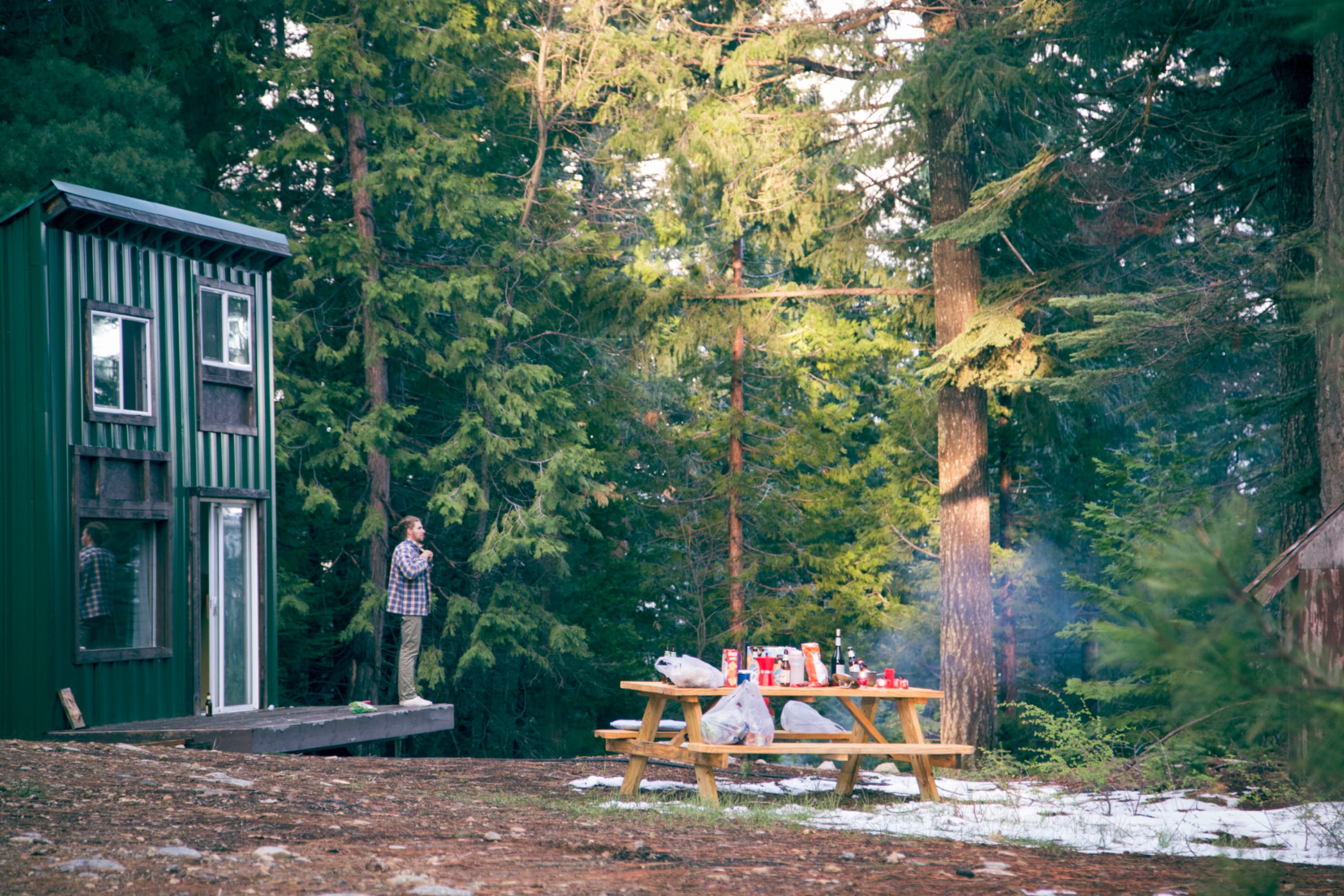In Defense of Shoulder Season


Let’s be real: shoulder season is the middle child when it comes to travel times. Sandwiched between the more coveted seasons, it scrapes together half the visitors and all the fickle weather.
In California’s Sierra Nevadas, shoulder season lives on the fringes of summer and winter, which are justifiably popular for their good weather and snow. Who wants to visit the mountains when there are clouds that threaten to unleash hell on you and only enough snow to turn trails into soup? You might, if you give it a chance.
Shoulder season is especially pronounced around Tahoe, in the northern tip of the Sierras. Throughout the winter, ski bums and chalet-dwellers make their annual pilgrimage to the region’s snow-covered mountains to shred powder and sip hot chocolate, respectively. After a few months, when the grass and rocks start peeking through the snow, visitors drive home and plan their return trips for summer, when trails will be primed for mountain biking or hiking and the lake will be ready for swimming. Most people overlook that crowdless, sweet spot in between.
But, if you’re a fan of privacy, off-season in the Sierras just became your best friend. Take Lassen Volcanic National Park, for example, which is just north of Tahoe in the Cascades: last year, it had ten times as many visitors in August as it did April. Likewise, at the southern end of the Sierras, Sequoia National Park clocked in half a million visitors in the summer season, but less than 250,000 throughout springtime. Even Yosemite—America’s fourth most beloved national park—attracts a whopping 50 percent less traffic in spring than it does summer. Are you doing the math here? That means way. Fewer. People.
Hiking near Muir’s Muse Retreat
Consider the advantages of having 50 percent fewer humans around you: empty trails, quiet nights, and views all to yourself. That’s camping as it should be—and can be. I would know, having just come back from shoulder season in Tahoe National Forest.
We drove up from San Francisco a couple weeks ago and reaped the rewards of off-season traffic immediately—no blizzard-induced 15-car pileups or congested highways. We got to the Tahoe region in record time.
While roads were empty, our little slice of forest was even emptier. Not a sign of life—car, human, or otherwise—to be seen. And throughout the night, our only soundtrack consisted of few crackles from the campfire and the odd coyote howl.
The trails were just as gloriously vacant. We bounded along the winding, densely forested Pioneer Trail like we’d just successfully robbed a bank, giddy to have not seen a soul for over ten miles. (All those fair-weather hikers can really mess up your running pace, okay?) Sure, the trails were more like rivers on some legs, but soakers were a small price to pay for total privacy.
And even if our feet were a little wet, the sun was still shining. We lucked out and got the good weather, with snow preceding us and rain following us. This is standard for the mountains, shoulder season or otherwise, and it’s not all bad—in this pile of kindling we call California, wet weather also means campfires. Fire hazards are low during the winter and spring, but in order to keep the Sierra Nevada’s forests unscorched, fire bans kick in at the end of June. That same warm, dry weather that attracted you to summer camping is now sticking its wildfire-prone tongue out at you.
Besides allowing you to have a campfire, spring snow has other perks, like ensuring you won’t have to drink a lukewarm beer for the duration of your trip. You also won’t have to panic about using highly-perishable food ASAP, because nature has hooked you up with all the refrigeration supplies you’ll need.
So, if you’re keeping track of how great shoulder season can be in the Sierras, that’s four reasons—privacy, campfires, refrigeration, and some God damn peace and quiet. Give it a chance next time you’re booking a campsite and you might discover even more.
Photos and Words by Madison Kotack at Muir’s Muse Retreat
Madison is a freelance reporter and photographer based in San Francisco. She’s a lover of dogs, trail running, and the outdoors. Check out her more of her work.
Recent Posts
The Best Places to See Blooming Bluebells in the UK
As springtime hits the UK, the winter blues are replaced with a violet hue of a different kind. A carpet…
Morel Mushroom Hunting Season: The 2024 Camping Guide
Spring is springing. And we all know what that means—the 2024 morel mushroom season is underway. To increase your chances…
Hipcamp Awards 2024: Best RV & Van Spots in the US
To help you find the best camping in the country, each year we compile data from bookings, reviews, and ratings…
Hipcamp Awards 2024: Best RV & Van Spots in Canada
To help you find the best camping in the country, each year we compile data from bookings, reviews, and ratings…
Hipcamp Awards 2024: Best Caravan Spots in Australia
Awards season has arrived! To help you find the best camping in the country, each year we compile data from…
Hipcamp Awards 2024: Best Campervan Spots in the UK
To help you find the best camping in the country, each year we compile data from bookings, reviews, and ratings…